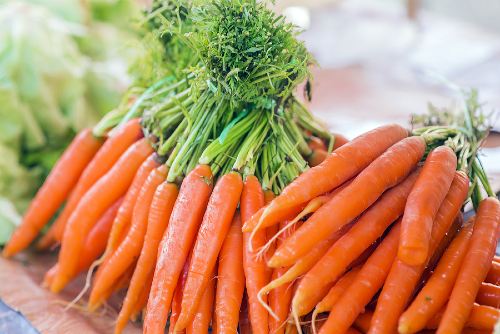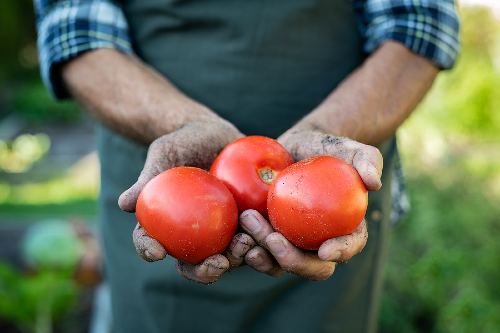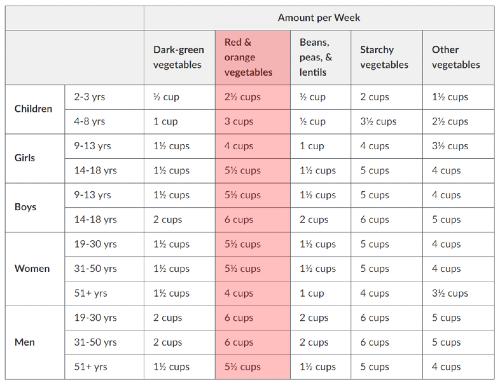Welcome to the first blog in our “Food Talk Features” series! As you may have seen in our previous post, we are featuring a food group or sub-group each month this year. These posts will include the health benefits of the highlighted foods and some recipes we think you will love. First up on the list: red and orange vegetables!
Red and orange vegetables are considered to be a sub-group of vegetables. Other vegetable sub-groups include:
- Dark-green vegetables
- Beans, peas, and lentils
- Starchy vegetables
- And other vegetables. [1]
What sets red and orange vegetables apart?
As kids, we were all told that carrots could give us x-ray vision. Did you know that this is partially true? Well, not really… But eating carrots can help improve your eyesight! In fact, red and orange vegetables have many health benefits such as:
- Supporting the immune system,
- Promoting skin and heart health,
- And preventing loss of eyesight. [2]
But what does color have to do with it? A nutrient called beta–carotene is what gives these vegetables their attractive red and orange hues. Once it is in the body, beta-carotene is turned into vitamin A. Vitamin A has been shown to promote eye health and has been linked to cancer prevention. [3] Good sources of this nutrient include pumpkin, carrots, and winter squash.

Foods such as sweet potatoes, tomatoes, and carrots also contain a nutrient called potassium. Potassium plays important roles in the functioning of muscles, bones, and the nervous system. [4] One particular muscle that benefits greatly from potassium is the heart! Learn more about the role of potassium in regulating blood pressure in our blog titled 4 Questions About Hypertension Answered.
Lastly, foods like tomatoes and red and orange bell peppers contain vitamin C. Like vitamin A, vitamin C is known for immune support and also skin health. [5]

How much do I need?
When it comes to vegetables, the amount that each person needs to eat ranges from 1-3 cups a day. [1] While it is important to consume vegetables each day, it is not necessary to eat from each sub-group daily. Instead, sub-group recommendations are based on the week.
To know how many red and orange vegetables you should strive to eat each week, check out the table from MyPlate below:

- Children (2-8 years old): 2 ½-3 cups
- Girls (9-18 years old): 4-5 ½ cups
- Boys (9-18 years old): 5 ½-6 cups
- Women (19-50 years old): 5 ½ cups
- Women 51 and above: 4 cups
- Men (19-50 years old): 6 cups
- Men 51 and above: 5 ½ cups
Want to know some of our favorite ways to prepare red and orange veggies? Check out the list of recipes below for tasty and creative ways to pack your next meal with vitamins and nutrients!
- If you are looking for ways to eat more carrots, our Slow Cooker Chicken and Dumplings and Crockpot Vegetable Lentil Stew recipes won’t disappoint.
- Red and orange peppers are packed with vitamin A and C. Give your immune system a helping hand with this Stuffed Peppers recipe.
- Dessert anyone? Try this classic Sweet Potato Cheesecake recipe.
Written by Darci Bell, RDN, LD | Edited by Leslie Davis, RDN, LD, CDCES , and the Nutrition Team
Posted: February 1, 2021
References: